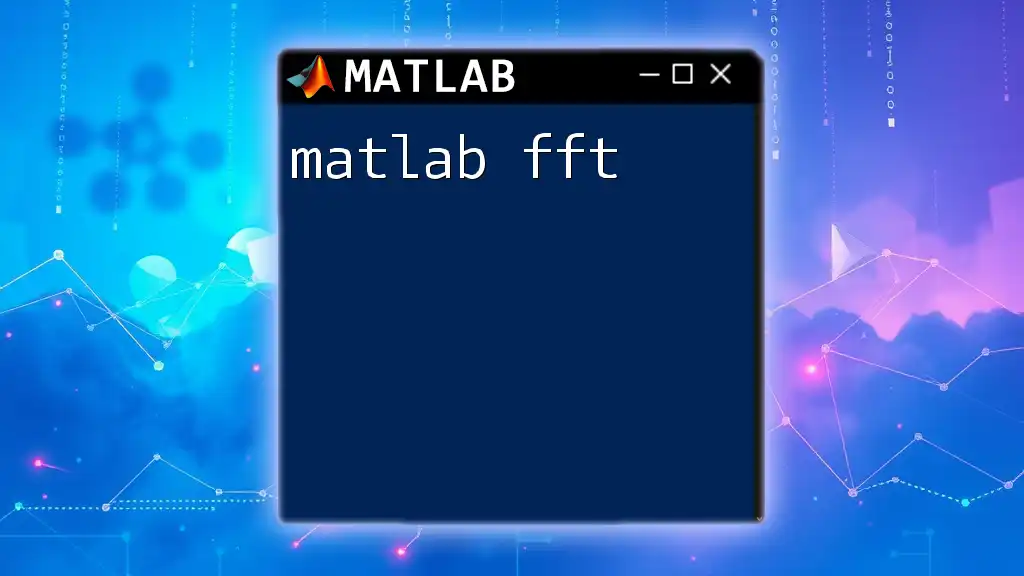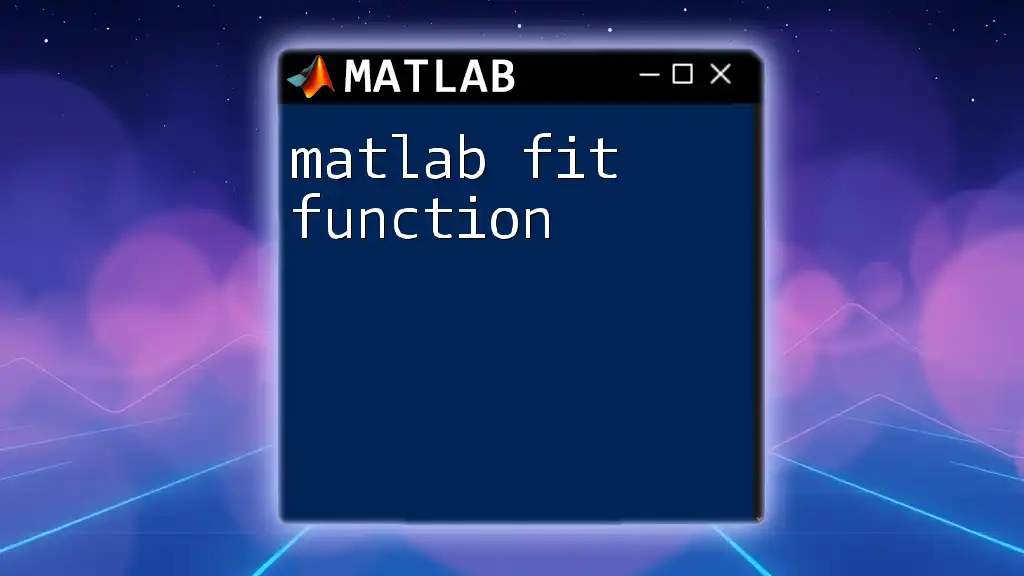The `ifft` function in MATLAB computes the Inverse Fast Fourier Transform of a given sequence, converting frequency domain data back to the time domain.
% Example: Compute the Inverse Fast Fourier Transform of a signal
X = [1, 2, 3, 4]; % Frequency domain representation
x = ifft(X); % Time domain representation
Understanding the IFFT Function in MATLAB
Definition of IFFT
The Inverse Fast Fourier Transform (IFFT) is a mathematical technique used to convert frequency domain data back into the time domain. The IFFT plays a crucial role in signal processing, particularly in applications where a signal needs to be reconstructed from its frequency components. Understanding how IFFT operates is essential for dealing with various types of signals in MATLAB.
Basic Syntax
In MATLAB, the IFFT function is invoked using the following syntax:
ifft(X)
Here, `X` represents the input frequency domain data, which can be a vector or matrix. Depending on the number of columns in `X`, the IFFT function will compute the inverse Fourier Transform along the specified dimensions.

Key Concepts Related to IFFT
FFT vs IFFT
The Fast Fourier Transform (FFT) converts a time-domain signal into its frequency representation, while the IFFT does the opposite. It's crucial to identify how these two functions relate to each other. In practical applications, while FFT is utilized for analysis, IFFT is employed for reconstruction. This is particularly useful in applications such as filtering, modulation, and spectral analysis.
Complex Numbers and IFFT
The IFFT handles complex numbers effectively. Complex data consists of real and imaginary parts, often needed for many signal processing tasks. When using IFFT, it is essential to understand how these components interact. The output will indicate both the magnitude and phase of the time-domain signal.

How to Use IFFT in MATLAB
Basic Example of IFFT
To demonstrate the usage of IFFT, consider a simple example where we have a signal represented in the frequency domain.
% Example of IFFT in MATLAB
X = [1, 2, 3, 4]; % sample frequency domain data
time_signal = ifft(X);
disp(time_signal);
In this example, the input array `X` is the frequency domain signal. Upon running the `ifft` function, the variable `time_signal` will hold the reconstructed time-domain representation of the signal.
Interpreting the Results
The output from the IFFT function provides insight into the time domain, displaying how the energies at different frequencies combine to recreate the original signal. Typically, this output is a complex array where the real part represents the actual time-domain signal, while the imaginary part generally approximates zero if the input signal was purely real.

Applications of IFFT
Signal Reconstruction
One of the most prominent applications of IFFT is in signal reconstruction. After transforming a time-domain signal into the frequency domain, we can manipulate it and then use IFFT to recover the original time-domain signal. For instance, in audio processing, audio signals are often manipulated in the frequency domain before being converted back to a playable format using IFFT.
Image Processing
The IFFT can also be applied in image processing tasks, particularly for image reconstruction and filtering. For example, consider the 2D case where we take the Fourier Transform of an image and use IFFT to reconstruct it.
% Example of 2D IFFT
img = imread('image.png'); % Load image
img_fft = fft2(img); % FFT of image
img_ifft = ifft2(img_fft); % Inverse FFT for reconstruction
imshow(uint8(img_ifft)); % Display reconstructed image
This example illustrates the practical use of IFFT in restoring images after some manipulation in the frequency domain.

Common Issues and Troubleshooting
Common Errors with IFFT
While implementing IFFT, users might encounter common errors such as dimension mismatches or unexpected results. To troubleshoot these issues:
- Always ensure that the input array or matrix has compatible dimensions.
- Check that your input does not contain NaN (not-a-number) values which can affect the calculations.
Performance Considerations
When working with large datasets, performance can become critical. IFFT computations may be memory-intensive, so it’s essential to:
- Optimize your code, possibly by using smaller data batches.
- Consider down-sampling or reducing the complexity of the problem when dealing with very large matrices.

Best Practices for Using IFFT
Preprocessing Data for IFFT
Before applying IFFT, preprocessing the data is crucial. Normalize or scale your data to ensure that the IFFT function operates effectively. This preprocessing can help mitigate issues such as clipping and distortion of the final output.
Interpreting the Output Correctly
When interpreting IFFT outputs, be aware of potential noise or artifacts introduced during processing. It can be beneficial to validate IFFT outputs by comparing them against known references or by reapplying FFT to confirm accuracy.

Conclusion
In summary, understanding the `matlab ifft` function is vital for effective signal processing. From reconstructing audio signals to image processing, IFFT plays a pivotal role in many applications. Users are encouraged to explore further by experimenting with different datasets or combining IFFT with other MATLAB functions. This will enhance their proficiency and understanding of working with frequency and time-domain transformations in MATLAB.

Additional Resources
For further exploration, users may refer to the official MATLAB documentation on IFFT for in-depth information. Additionally, external resources, tutorials, and video guides can significantly enhance learning and application skills related to MATLAB and the IFFT function.

















